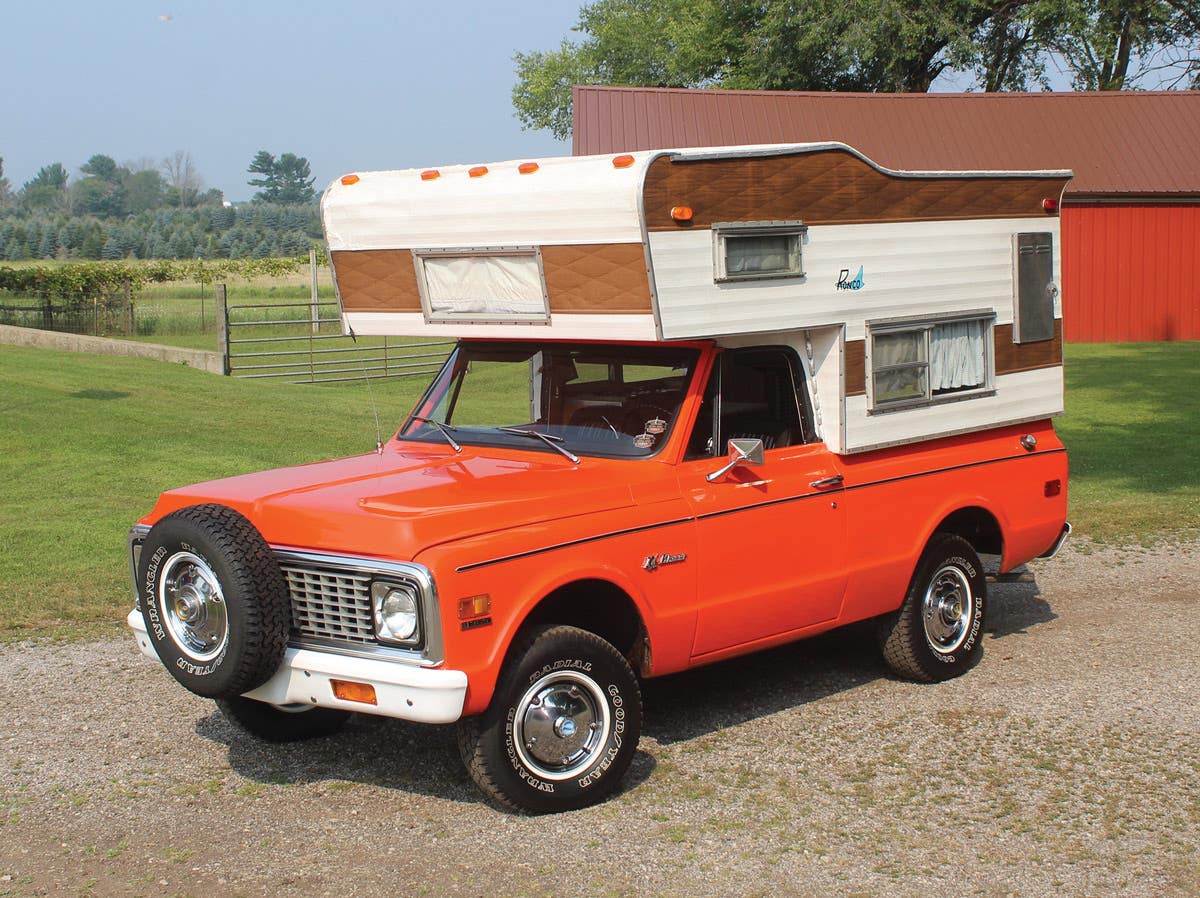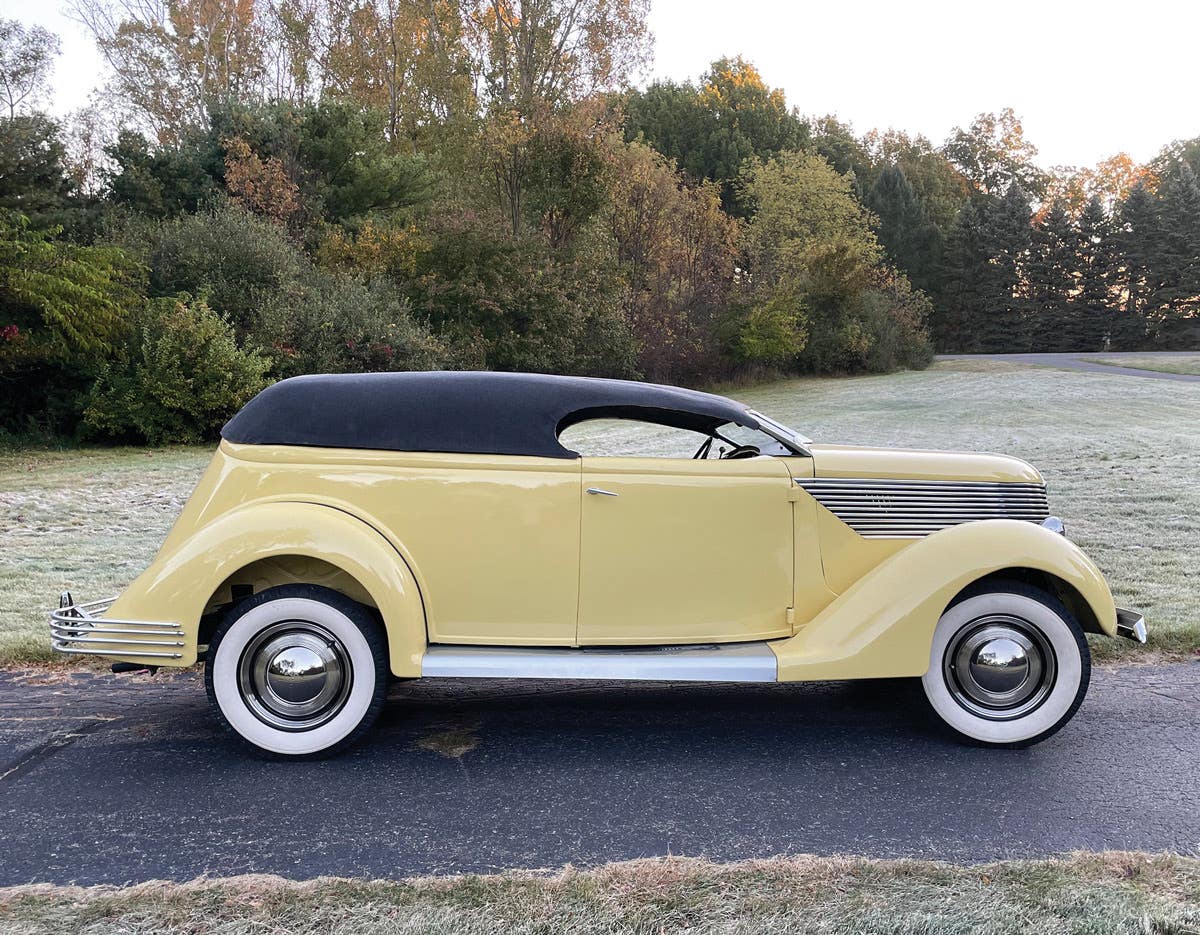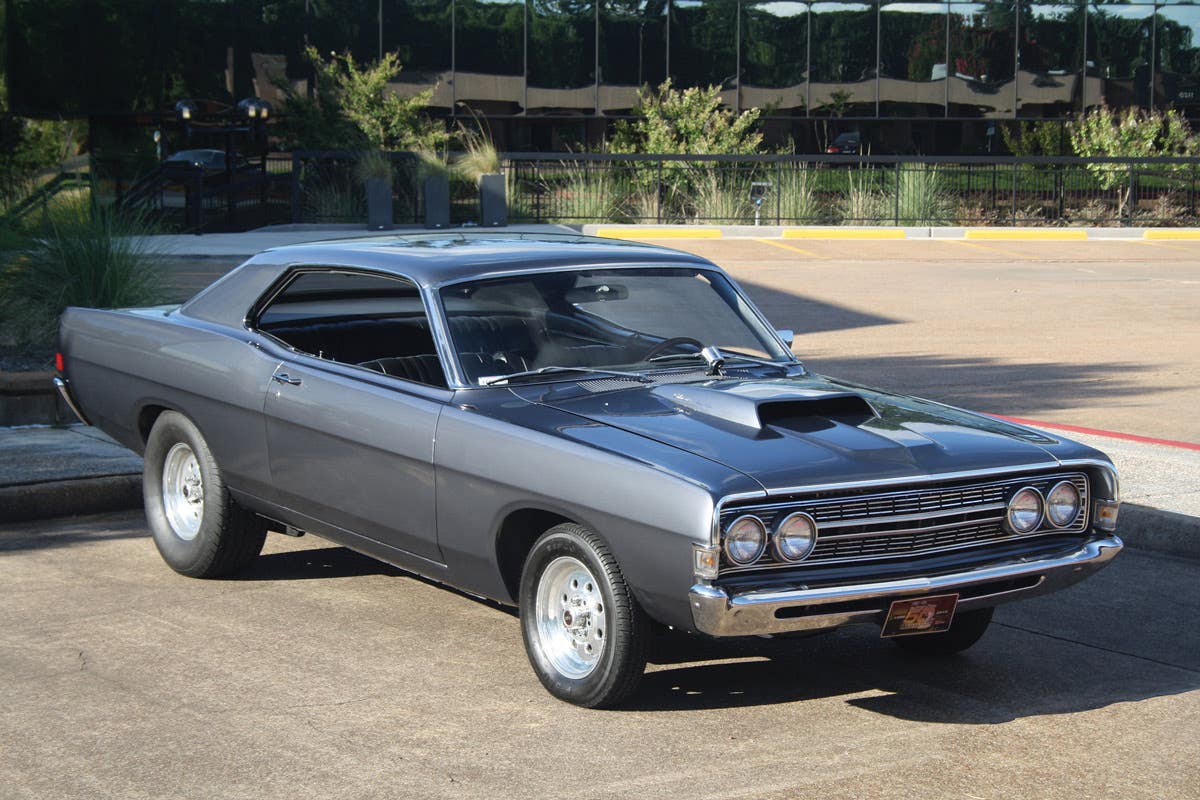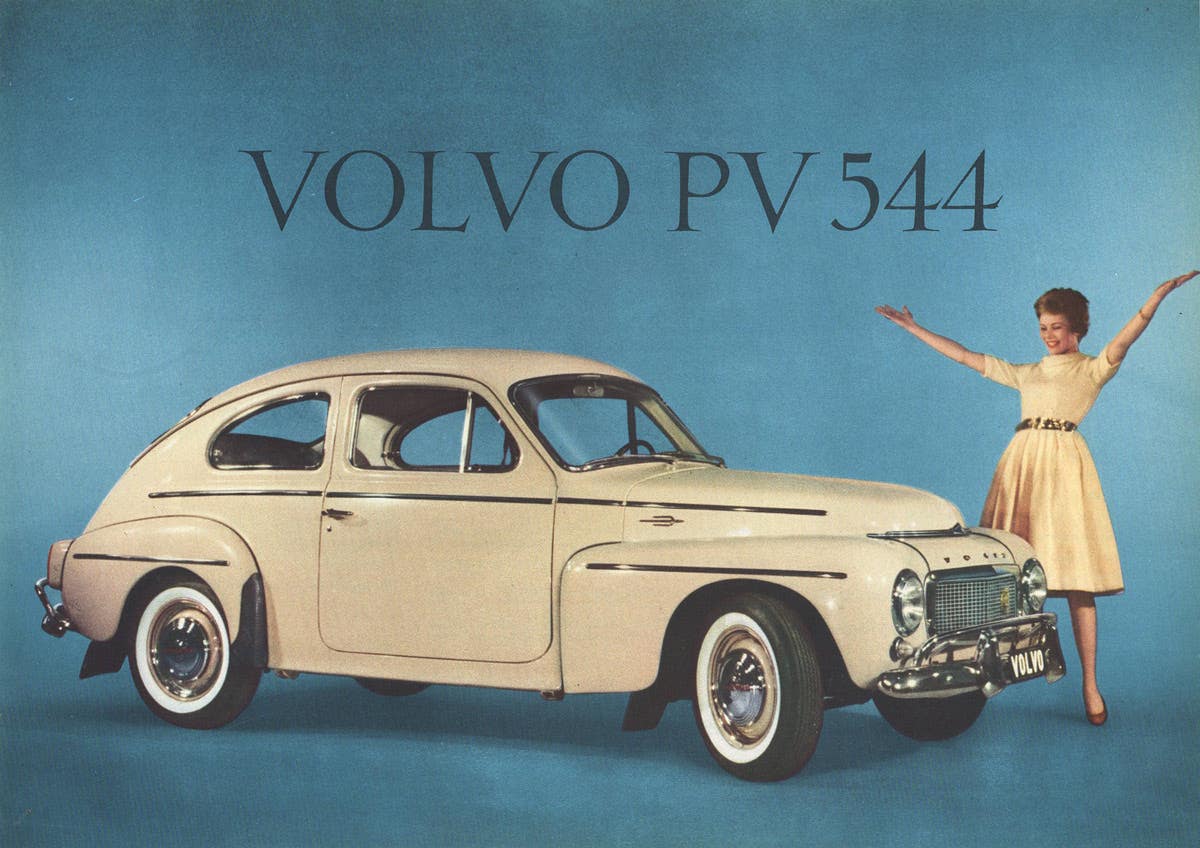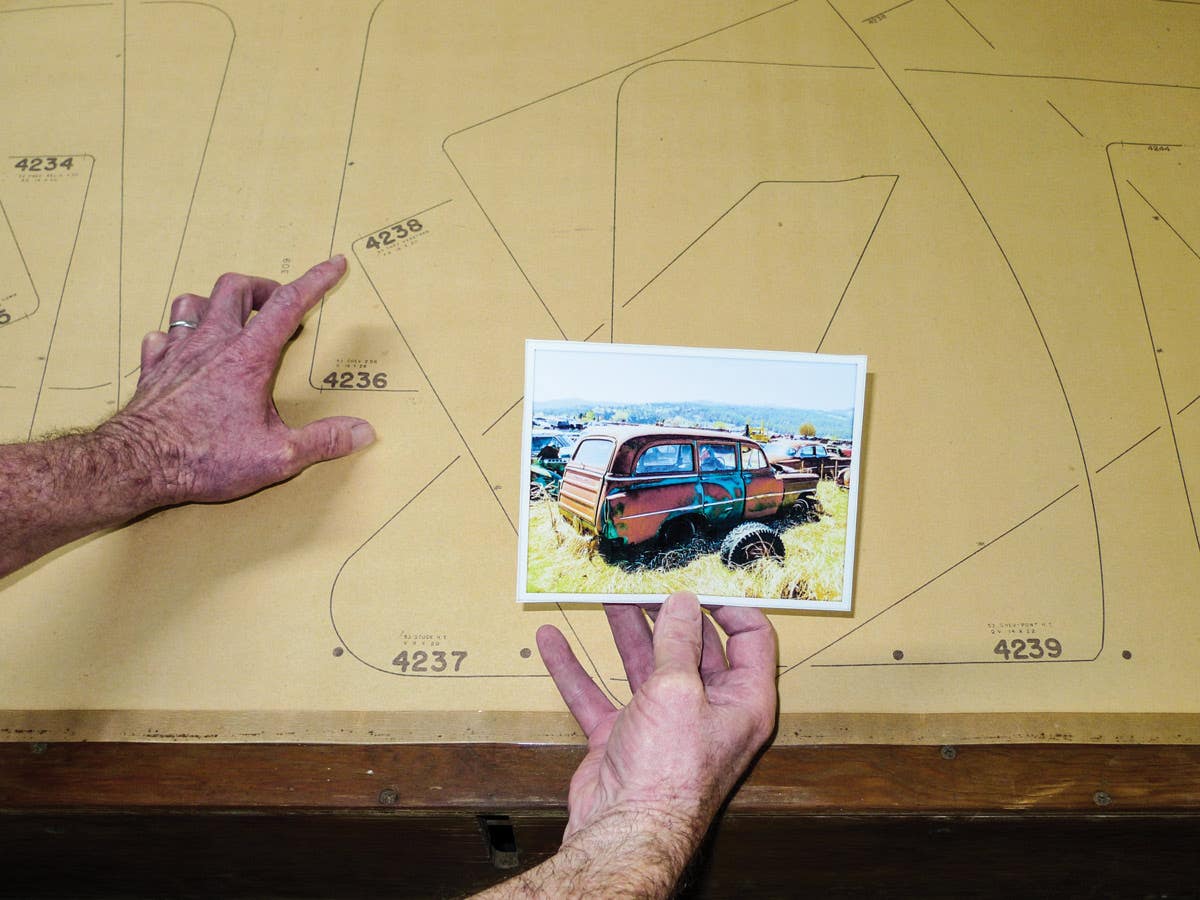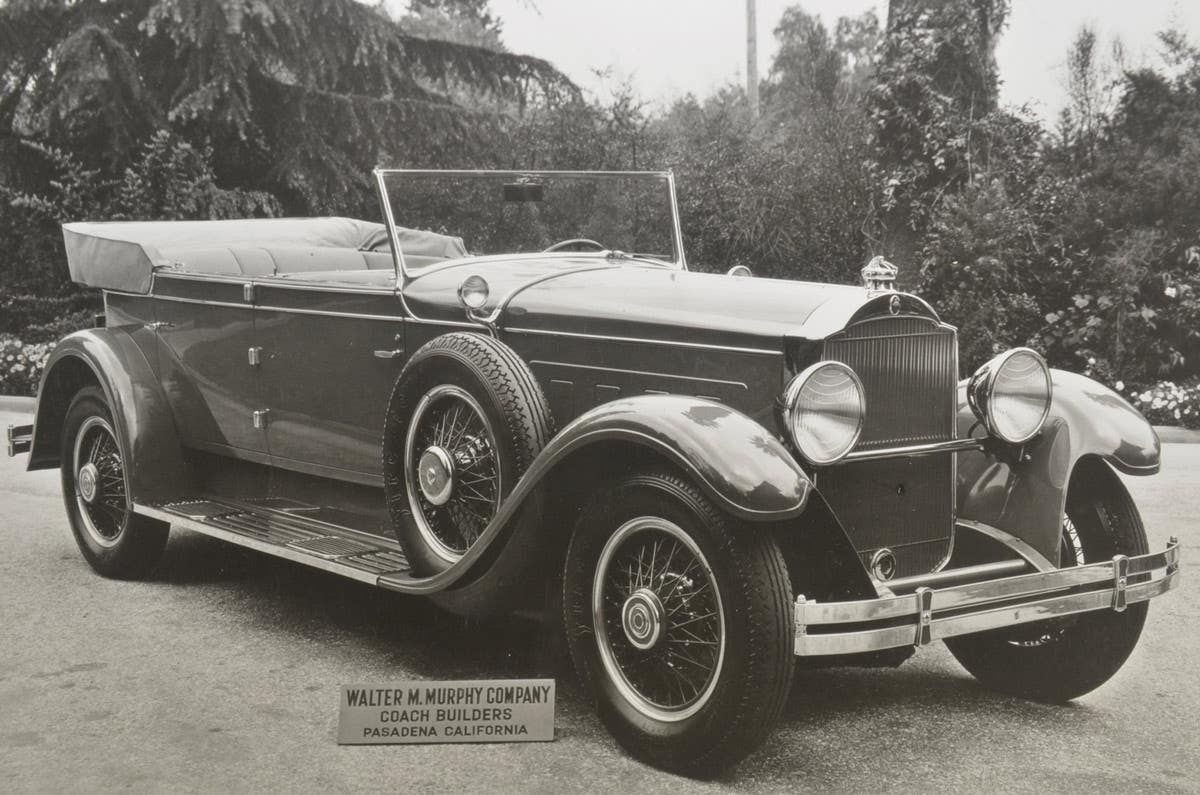Chrysler Cars Were Late To The Collector-Car Hobby
In the early days, Chrysler was far from having the leading edge in the old car hobby. Why? Did it relate to the cars? Lack of innovations? No excitement? Poor style? Bad performance? Probably none of these. More than anything, it was timing.
Early on, Chrysler was far from having the leading edge in the old car hobby. Why? Did it relate to the cars? Lack of innovations? No excitement? Poor style? Bad performance? Probably none of these. More than anything, it was timing.
The old car hobby took root in the late 1930s and advanced throughout the 1940s, slowing a bit during the war years. What cars were considered collectible in the 1930s and 1940s? The older ones, which were the horseless carriages and veterans made through the teens and into the early 1920s. Unfortunately, the Chrysler nameplate did not appear until 1924 as a product by the Maxwell-Chalmers Corp.
In general, this 1935 Airflow was not considered a collectible model by many hobbyists until well into the 1950s. It was a matter of timing.
From the perspective of the old car hobby in 1938, that would have meant even the oldest Chrysler was a mere 14 years old! This placed it in the category of “used car” more than collectible. Granted, a few may have appeared on club tours, mainly because they were among the first of the marque. Those would have been considered “future collectibles” and tolerated by hobbyists with foresight; others would have been tempted to cast their attention toward older cars.
Late Maxwells fared about as well. They carried the aura of pending “orphan” when Walter P. Chrysler came on board to redirect the sinking corporation. With the marque’s run stretching from 1904 through 1925, you can guess which versions hobbyists initially desired. Collectors wanted a challenge. They anticipated getting under the car to get it running once it broke down on a short tour. For many, it was a trip back in time to motor in a vintage car that reflected the pioneering days of the open road. Early Maxwells, especially before 1915, were in demand.
Of course, other makes had the same challenge of timing. In 1940, a classic 1925 Cadillac was only 15 years old. What was much preferred was a 1905 Cadillac that naturally coughed and chugged and sputtered. Collectors preferred a Packard Twin Six from 1918 to a 1937 V-12 model, which was no longer in demand by the majority of first owners due to styling obsolescence. V-12 engines were thirsty to operate, and bodies were heavy with resultant wear on tires and suspensions. Such used cars were entering livery or limousine services, some even converted to taxis. The first Chevrolets had a modest following, but only up to around 1920. Many late Ford Model T’s were still being driven with a degree of regularity, so only the brass versions carried much collector impact.
Dodge automobiles had been constructed since 1914. Initially under the Dodge brothers’ control, the company went up for sale following their deaths in 1920. So Dodge cars were just barely included in the category of early collector vehicles in 1938.
Plymouths and De Sotos had debuted in 1928. That made them a decade old in 1938. Few collectors entertained the concept back then that such cars would become collectible.
Something changed in the late 1940s. There was a strong movement toward “classic” cars — the big, beastly expensive, highly admired glory cars of the late 1920s (and soon up to and including 1942). This began as a segment of younger collectors opted for luxury and affordability, reliability for touring and availability of parts. Gaining the attention of hobbyists were Chrysler Imperials and the high-end open Chryslers offering sporting lines and power to boot.
Chrysler and De Soto Airflow styling was not fully appreciated early in the hobby. However, Airflows eventually would gain a dedicated following, especially due to the innovations of steel construction with rollover capability, safety features and aerodynamic properties, which were highly respected. These features were being adapted into modern production, which no longer set the Airflow in a class by itself.
But in the minds of many collectors, the older manner of construction looked and felt antiquated, which itself was a quaint attraction.
What was the old car hobby really like immediately before World War II? Old cars with one- or two-cylinder engines and brass trim still dominated among old-car owners. Outside of an occasional Maxwell, little connection was made between that era and the Chrysler years. Early Dodges were appreciated for rugged performance, reliability on tours and all-steel construction. There was also the aura of the Dodge brothers themselves, who made their mark as major component manufacturers in early Model T Ford production, then decided to launch their own brand — much to the dismay of Henry Ford.
Among collectors, prewar Chrysler products took a giant step forward in the 1950s. As models approached or surpassed the 25-year mark, interest grew. As the low, wide and long styling of 1960 took hold, even Chryslers from 1942 looked antiquated. Collectors liked that. It enhanced the general feeling of nostalgia.
Chrysler’s launch of its original Town and Country version for 1941 would create a sensation that grew in subsequent years. It was a masterpiece on wheels and was respected when new. That design set a new standard that is fondly remembered today, even amid more recent applications of the Town and Country name. But initially, it was not considered an old car until age had settled in. By the 1960s, it was a serious collector car.
Had Chrysler been launched with different timing, the results could have been more dramatic. Imagine if Walter P. Chrysler had purchased the Buick arm of General Motors. It was not an impossible idea, since he had headed that division. Imagine the Buick brand being changed into Chrysler by 1915. Collectors would have been attracted to it during the earliest stage of the hobby.
Imagine even further. What if the Buick name had been retired in favor of Chrysler as a GM brand? Would there have been a Chrysler Corp. as we came to know it? What if Walter P. Chrysler had stepped in to helm GM in the early 1920s with the departure of William C. Durant and guided that conglomerate to different heights? What if the very name had been changed from General Motors to Chrysler Motors?
Perhaps Dodge might have withered in the 1920s, been purchased by Henry Ford at his price or faded from history. We might never have known a Plymouth in 1928 or its companion De Soto.
But history being what it is, we know what happened. And whenever an old Chrysler graces the concours field, it will probably be one of a select few among the survivors. It’s worth every turn of the head it commands.



